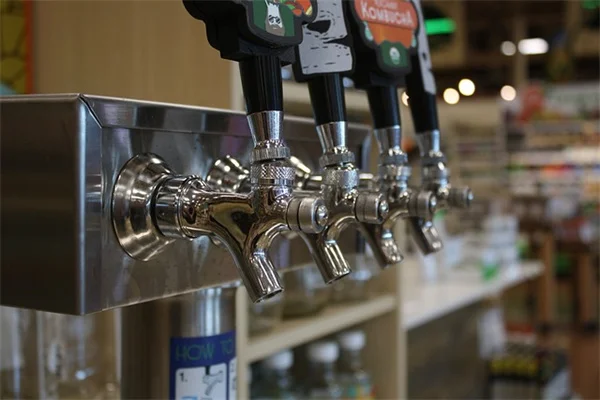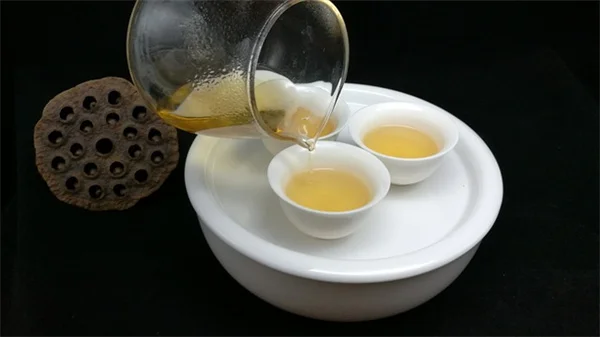Advertisement
Can shape-shifting antibiotics solve our superbug crisis? The answer is: Yes, they might be our best shot yet! With over 2.8 million antibiotic-resistant infections occurring annually in the U.S. alone, scientists have developed a revolutionary approach using molecular Rubik's cubes that constantly change form to outsmart bacteria. I'm excited to tell you about this breakthrough that could save thousands of lives each year. Unlike traditional antibiotics that bacteria quickly learn to resist, these shape-shifting compounds make it nearly impossible for superbugs to adapt. The best part? Early tests show they're not only more effective against resistant infections but potentially safer too. Let me break down why this discovery is such a game-changer for all of us.
E.g. :Typhus Outbreak in LA: 3 Deaths & How to Stay Safe
- 1、The Growing Threat of Antibiotic Resistance
- 2、The Rubik's Cube Solution
- 3、The Science Behind the Magic
- 4、What This Means for You
- 5、The Road Ahead
- 6、The Hidden Dangers in Your Medicine Cabinet
- 7、The Farm Connection You Never Knew About
- 8、Everyday Heroes Fighting Resistance
- 9、The Future is Brighter Than You Think
- 10、FAQs
The Growing Threat of Antibiotic Resistance
Why Should You Care About Superbugs?
Imagine going to the hospital for a simple procedure and ending up with an infection that no medicine can cure. Scary, right? Well, that's exactly what's happening to 35,000 Americans every year thanks to antibiotic-resistant bacteria. And guess what? The problem is even worse in developing countries where access to modern medicine is limited.
Here's a shocking fact: in the U.S. alone, we're seeing 2.8 million antibiotic-resistant infections annually. That's like the entire population of Chicago getting sick from superbugs! The CDC isn't joking when they call this a 'global threat' - it's like the bacterial version of climate change, quietly creeping up on us while we go about our daily lives.
The Economic Side of Superbugs
Let me break it down for you in simple terms. Developing new antibiotics is expensive, and here's the kicker - pharmaceutical companies don't make much money from them. Why? Because unlike blood pressure meds that people take for decades, antibiotics typically work in 10-14 days. No wonder big pharma isn't rushing to invest in this area!
| Type of Medication | Average Treatment Duration | Profit Potential |
|---|---|---|
| Antibiotics | 10-14 days | Low |
| Blood Pressure Meds | Lifetime | High |
The Rubik's Cube Solution
 Photos provided by pixabay
Photos provided by pixabay
How Shape-Shifting Antibiotics Work
Picture this: scientists have taken vancomycin (our last-line defense antibiotic) and attached it to something called bullvalene. Dr. Josh Homer, one of the researchers, describes it perfectly: "It's like a Rubik's cube that can change its form." The antibiotic parts can literally dance around, making it super hard for bacteria to develop resistance.
In their tests using wax moth larvae (yes, bugs help save lives too!), these shape-shifting antibiotics kicked butt against resistant bacteria. The best part? The bacteria didn't show any signs of developing resistance. That's like creating a lock that constantly changes its shape - burglars (or in this case, bacteria) would never figure out how to pick it!
Why This Approach is Different
You might be thinking, "Haven't scientists tried making vancomycin stronger before?" Absolutely! But here's what makes this different:
- Previous attempts created static molecules
- This new version has over a million possible configurations
- It's like comparing a single key to a master key that morphs to fit any lock
The Science Behind the Magic
Click Chemistry - Nature's LEGO
The researchers used something called click chemistry (think of it like molecular LEGO) to snap two vancomycin molecules onto a bullvalene core. This creates what we call a vancomycin dimer. Now, here's where it gets really cool - the bullvalene core is constantly rearranging itself, making the whole structure dynamic.
Dr. Mark Blaskovich (who wasn't involved in this study but knows his stuff) put it perfectly: "The unique component is using a 'shapeshifting' linker that exists in multiple structural forms." This constant shape-shifting makes it incredibly difficult for bacteria to develop resistance.
 Photos provided by pixabay
Photos provided by pixabay
How Shape-Shifting Antibiotics Work
Now, I know what you're thinking: "This sounds amazing, but is it safe?" Great question! Regular vancomycin can be tough on your liver and kidneys, especially at high doses. The early tests show these new shape-shifters might actually be less toxic, which is a huge win.
But let's be real - we're still in the early stages. The researchers are now working to:
- Make the compounds more potent
- Test them in more complex organisms
- Go through the standard drug approval process
What This Means for You
A Future Without Antibiotic Resistance?
Could this be the beginning of the end for superbugs? Maybe! The potential here is enormous. Imagine a world where:
- Routine surgeries don't carry infection risks
- Cancer patients don't have to worry about secondary infections
- Simple cuts and scrapes don't turn life-threatening
But here's the reality check - we're not there yet. The research team still needs to:
- Optimize the compounds
- Conduct extensive safety testing
- Prove effectiveness in humans
The Bigger Picture
This isn't just about creating one new antibiotic. It's about developing a whole new approach to fighting bacteria. If we can teach our drugs to adapt like bacteria do, we might finally gain the upper hand in this microscopic arms race.
As Dr. Homer puts it: "The most exciting thing is that we're using drugs that are already out there and repurposing them." That's like taking your grandpa's old car and turning it into a self-driving Tesla - same basic parts, but with a revolutionary new twist!
The Road Ahead
 Photos provided by pixabay
Photos provided by pixabay
How Shape-Shifting Antibiotics Work
Before you get too excited, let's talk about the hurdles. These shape-shifting antibiotics currently require relatively large doses. That's like needing a whole bottle of hot sauce to flavor your tacos - not ideal. The researchers are working to make them more potent so we can use smaller, safer amounts.
Another challenge? Funding. Remember our earlier chat about why pharma companies aren't jumping on antibiotics? Well, innovative solutions like this need support from:
- Government grants
- Non-profit organizations
- Forward-thinking investors
Why This Research Matters to You
Here's something to think about: have you ever taken antibiotics for a sinus infection or strep throat? Well, those same drugs might not work when you really need them in the future. That's why this research is so crucial - it's not just about abstract science, it's about protecting your health and the health of people you love.
The team is optimistic but realistic. As Dr. Homer says: "This is definitely a promising start." And in the world of medical research, where progress often moves at a snail's pace, that's saying something!
The Hidden Dangers in Your Medicine Cabinet
How Your Antibiotic Habits Fuel Resistance
You know that leftover amoxicillin from last winter's sinus infection? Big mistake keeping it around! When we self-prescribe antibiotics or don't finish our full course, we're basically training bacteria to become drug-resistant. It's like giving burglars a map to your home security system!
Here's something wild - studies show that 30% of antibiotics prescribed in outpatient settings are completely unnecessary. That's like giving out umbrellas during a drought! The worst offenders? Ear infections and sore throats - most are viral, but we still pop antibiotics like candy. No wonder bacteria are getting smarter than our meds!
The Global Impact of Your Local Pharmacy
Ever wonder why antibiotic resistance is worse in some countries? In many places, you can buy antibiotics without a prescription - like picking up milk at the grocery store. This creates a perfect storm where bacteria get constant low-dose exposure, allowing them to develop resistance faster than you can say "superbug."
| Country | Antibiotics Without Prescription | Resistance Rates |
|---|---|---|
| United States | No | Moderate |
| India | Yes | High |
| Mexico | Yes | Very High |
The Farm Connection You Never Knew About
How Your Burger Contributes to Resistance
Here's a juicy fact - 80% of antibiotics sold in the U.S. go to livestock, not humans! Farmers use them to fatten animals and prevent disease in crowded conditions. The resistant bacteria then hitchhike into your body through undercooked meat or contaminated veggies. Bon appétit!
But wait - isn't this just a food safety issue? Nope! The antibiotics given to animals are often nearly identical to human medications. When bacteria develop resistance on farms, those same resistant strains can make your next infection untreatable. Talk about unintended consequences!
The Silver Lining in Agriculture
Before you swear off meat forever, here's some good news: major fast food chains are now demanding antibiotic-free meat. Chick-fil-A and McDonald's have made huge shifts in their supply chains. Even better? Farmers are discovering that simple changes like giving animals more space and better feed can reduce disease without drugs.
You know what's really cool? Some forward-thinking farmers are using probiotics for livestock instead of antibiotics. It's like giving cows yogurt instead of pills! Early results show this might keep animals healthy while protecting human medicines. Now that's what I call a win-win!
Everyday Heroes Fighting Resistance
How Hospitals Are Changing the Game
Did you know nurses are the secret weapon against superbugs? Simple stuff like proper handwashing and thorough equipment cleaning can prevent more infections than any new drug. Some hospitals have cut resistant infections by 50% just by being obsessive about hygiene. That's better protection than any antibiotic!
Here's something you'll love - many hospitals now have "antibiotic timeout" policies. After 48 hours of treatment, doctors must stop and ask: "Does this patient still need these drugs?" It's like a reality check for prescriptions! This simple step has reduced unnecessary antibiotic use by 30% in some places.
Your Role in the Solution
Wanna be a superhero without leaving your house? Next time you're sick, don't pressure your doctor for antibiotics. Instead, ask: "Is this really necessary?" You'd be surprised how often the answer is no. And if you do get antibiotics? Take every last pill, even if you feel better. Those last few doses are like mopping up the stragglers!
Here's my favorite tip - when you get prescribed antibiotics, ask about the narrowest spectrum option available. Broad-spectrum antibiotics are like nuking an anthill - they kill everything, including your good gut bacteria. Narrow-spectrum drugs target just the bad guys, leaving your microbiome happier and reducing resistance risks.
The Future is Brighter Than You Think
Breakthroughs Beyond Antibiotics
Get this - scientists are exploring some wild alternatives to traditional antibiotics. One team is using CRISPR gene-editing to make "predator" viruses that hunt specific bacteria. It's like programming microscopic hitmen! Another group is testing silver nanoparticles that shred bacterial membranes like tiny ninja stars.
But my personal favorite? Researchers are studying how certain sugars can make bacteria vulnerable again to old antibiotics. It's like taking away their armor! Early tests show this could breathe new life into drugs we thought were obsolete. How cool is that?
Why You Should Stay Hopeful
Remember when everyone thought we'd never solve the ozone layer crisis? Well, we did! Antibiotic resistance seems scary now, but human ingenuity has a way of rising to challenges. Between shape-shifting drugs, better farming practices, and hospital protocols, we're building a multi-layered defense.
The best part? Every single one of us can help. Whether it's choosing antibiotic-free meat, washing our hands properly, or using medications wisely, we're all part of the solution. As my grandma used to say: "Many hands make light work" - even when those hands are fighting microscopic invaders!
E.g. :Shapeshifting bullvalene-linked vancomycin dimers as effective ...
FAQs
Q: How do shape-shifting antibiotics actually work?
A: Imagine trying to pick a lock that keeps changing its shape - that's essentially what these new antibiotics do to bacteria! Scientists have attached vancomycin (our last-line defense drug) to a molecule called bullvalene that can rearrange itself into over a million configurations. As Dr. Josh Homer explains, it's like having two antibiotic units dancing around a Rubik's cube core. This constant movement prevents bacteria from developing resistance because they can't lock onto a single target. In lab tests, these shape-shifters were significantly more effective than regular vancomycin at clearing resistant infections, and crucially, the bacteria showed no signs of adapting to them.
Q: Why is antibiotic resistance such a big problem now?
A: Here's the scary truth: we're facing what the CDC calls a 'global threat' with 35,000 Americans dying each year from untreatable infections. The problem stems from bacteria evolving faster than we can develop new drugs. What makes it worse is that pharmaceutical companies aren't investing much in antibiotics because they're not profitable - unlike medications for chronic conditions that people take for years, antibiotics typically work in just 10-14 days. This perfect storm means routine medical procedures like C-sections or hip replacements could become dangerously risky if we don't find solutions like these shape-shifting antibiotics soon.
Q: Are these new antibiotics safer than current treatments?
A: Early results are promising! Traditional vancomycin can damage your liver and kidneys, especially at the high doses needed to fight resistant infections. The researchers tested their lead shape-shifting candidates against human kidney and liver cells and found them less toxic than standard vancomycin. However, it's important to note that these compounds currently require relatively large doses to be effective, so scientists are working to make them more potent before human trials. As with any new drug, extensive safety testing still lies ahead, but the reduced toxicity in initial tests is definitely encouraging.
Q: When might shape-shifting antibiotics be available to patients?
A: While this breakthrough is exciting, we're still in the early stages. The research team is currently optimizing the compounds to increase their potency. After that comes the lengthy drug approval process involving animal studies and human clinical trials. Realistically, we're looking at several years before these could potentially reach pharmacies. But here's why this matters now: this approach could revolutionize how we design all future antibiotics, not just this specific compound. The shape-shifting concept might be applied to other drugs, creating an entire new class of adaptive medications.
Q: How can I help fight antibiotic resistance today?
A: Great question! While we wait for these advanced treatments, there's plenty you can do right now. First, never pressure your doctor for antibiotics if they say you don't need them - overuse accelerates resistance. Always complete your full prescription, even if you feel better. Practice good hygiene to prevent infections in the first place. Support organizations funding antibiotic research, and stay informed about this critical health issue. Remember, antibiotic resistance affects everyone - your actions today help protect these life-saving drugs for future generations while scientists work on solutions like shape-shifting antibiotics.

